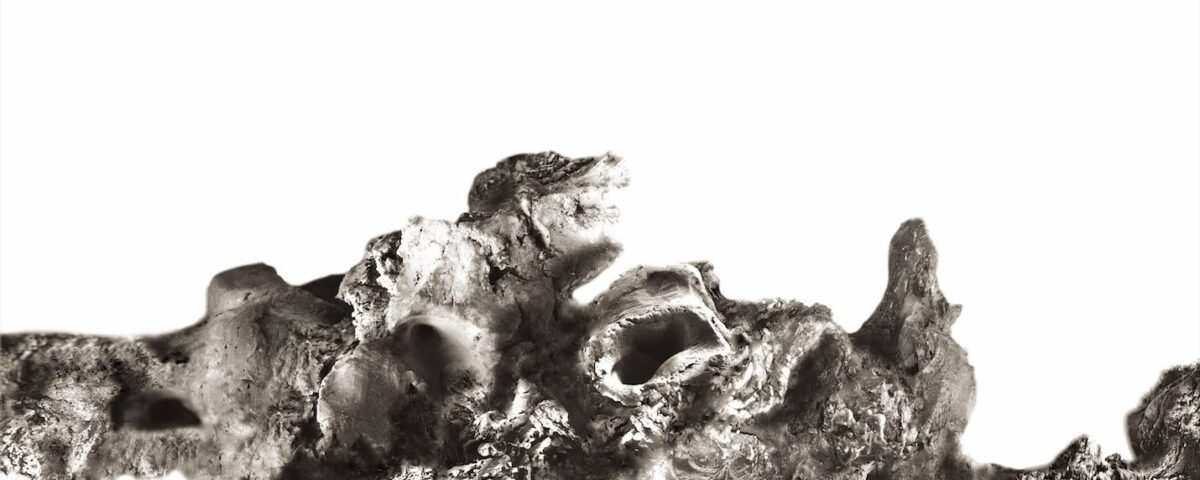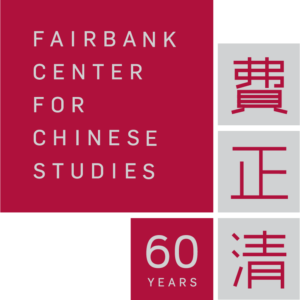
Tianzhu Global Network for the Study of Buddhist Cultures, Fairbank Center for Asia Studies, and Rainbow Private Foundation are proud to sponsor the exhibition Fire Dream: Zhao Meng and the Reinvention of the Clay Medium featuring ceramic artist Zhao Meng’s 赵梦 works of photographic prints.


Complicating the boundaries between the artificial and the real, the digital and the material, Zhao’s prints spectrally capture Zhao’s ceramic pieces designed to resemble garden rockery. With rice straws and other paper-making pulp worked into the clay in the initial firings of the ceramics, which are then subsequently digitally captured, sutured, and printed on rice paper, the work performs the full cycle of material transformation. This exhibition is occuring alongside the Artist Talk by Sun Ren, Zhao’s former professor at the China Academy of Art. It will conclude with a closing reception and panel discussion by Sun Ren (China Academy of Art), Eugene Y. Wang (Harvard University), Professor Jeffrey Moser (Brown University), and Brad Miller (Brad Miller Studio).
Exhibition Dates: September 6-October 30, 2019
Venue: Harvard University, CGIS South Concourse, Tsai Auditorium, S010
1730 Cambridge Street, Cambridge, MA
Closing Reception & Panel Discussion: Friday, October 25, 2019, 4:00 pm to 6:00 pm
Venue: Harvard University, Sackler Building 427
About the Panel
Brad Miller’s work can be found in the collections of the Los Angeles County Museum of Art, The Museum of Fine Arts Houston, Denver Art Museum and National Museum of American Art. He is represented by the Edward Cella Art and Architecture Gallery, Los Angeles and the Harvey/Preston Gallery, Aspen. Brad lives and works in Venice, CA. and is actively sharing his work and techniques on Instagram at bradmillerstudio.
Jeffrey Moser focuses on the ways in which sensory engagement with material things transformed historical approaches to the challenges of making, reasoning, and knowing. His publications include articles on Chinese ceramics, ink painting, antiquarianism, ritual exegesis, and geography. Professor Moser is currently completing a book manuscript entitled Nominal Things: Bronzes, Schemata and the Hermeneutics of Facture in Northern Song China, which examines the ways in which the rediscovery and systematic cataloging of archaic bronzes disrupted classical hermeneutics and the fracture of ritual forms. He is also engaged in two new research projects. The first examines the recently discovered family cemetery of the Neo-Confucian philosopher and antiquarian collector Lü Dalin (1040–1093). The second explores the role of taste and aesthetic judgment in the epochal transformations of East Asian ink painting that occurred between the twelfth and fourteenth centuries.Professor Moser teaches an introductory course on the arts of Asia organized around the biographies of exemplary objects, as well as topical surveys and focused seminars. He also advises graduate students in all fields of Chinese art history.
Eugene Y. Wang is the Abby Aldrich Rockefeller Professor of Asian Art. A Guggenheim Fellow (2005), he is the art history editor of the Encyclopedia of Buddhism (2004), and the author of numerous publications ranging from early Chinese bronzes to contemporary art. He book, Shaping the Lotus Sutra: Buddhist Visual Culture in Medieval China (2005), which received an academic award from Japan, explores transformation tableaux in middle-period China and ways of world-making. His current research explores the relationship between art and mind, visual manifestations of mindscape and mental theater, the Buddhist visualization in caves and other settings, the early Chinese “generative art” that programmatically produces visual schemes, art and artificial life, art and performativity, the “voice” or subjectivity effect in art, and the making of art historical narratives.
He is also the founder and director of the Harvard FAS CAMLab (Chinese Art Media Lab). The lab explores innovative ways of showcasing Chinese art and culture through immersive installations, films, and other multimedia forms. Current lab projects include the production of To the Moon, an epic art film project about a China-born artist’s long career that culminated in taking Chinese pictorial imagination to the moon and cosmic space. Another experimental film project maps the meditative process leading to the climax of nirvana that collapses past, present, and future. Other major projects include installation designs featuring art objects and projections to evoke the experiential and imaginary spaces of classical Chinese theater.
Sun Ren is an Associate Professor at the China Academy of Art and Vice President of China Contemporary Art Research Institute. He graduated from the Zhejiang Academy of Fine Arts in 1985, where he would later become a professor. An active participant of the Chinese modern art movement, ‘85 New Wave, Sun is well known for his pioneering approach to modern ceramic art, while also exploring modern inkbrush and conceptual painting. In 1985, he directed the modern absurdist play “Hamlet in Heaven.” In 1986, he curated the avant-garde “’86‘ Final Exhibition No.1.” In 1988, he held a research-based modern ceramic art and ink painting solo exhibition, and participated in the first China Modern Art Seminar (Huangshan). In 1989, he participated in the first “China Modern Art Exhibition” (Beijing). Since 2010, Sun has visited Tibet, Nepal, Bhutan, the United States and New Zealand to conduct in-depth research on the international crisis of glacier melting and water pollution, which resulted in the series “The Himalayan Apocalypse.” At the same time, he continues to explore the visual language of contemporary ink painting. As the leader of the Public Art Department of the China Academy of Art, Sun has spearheaded a number of large-scale public art projects.
